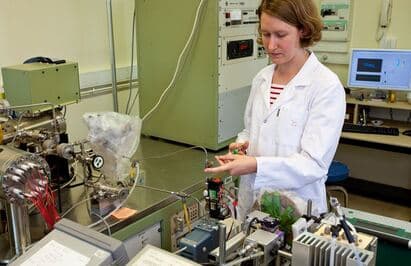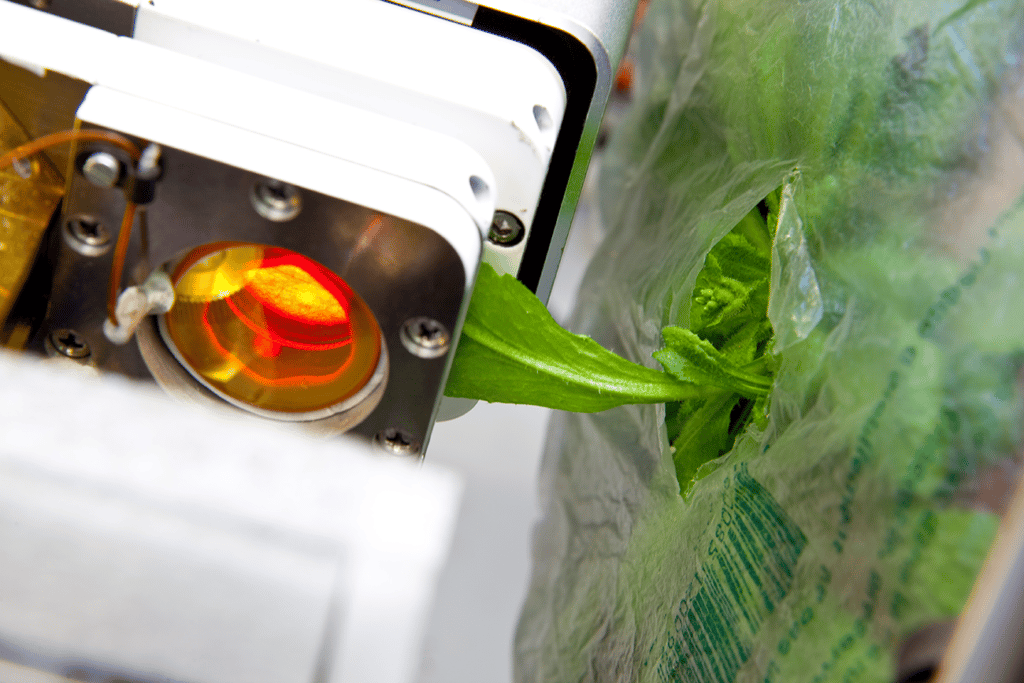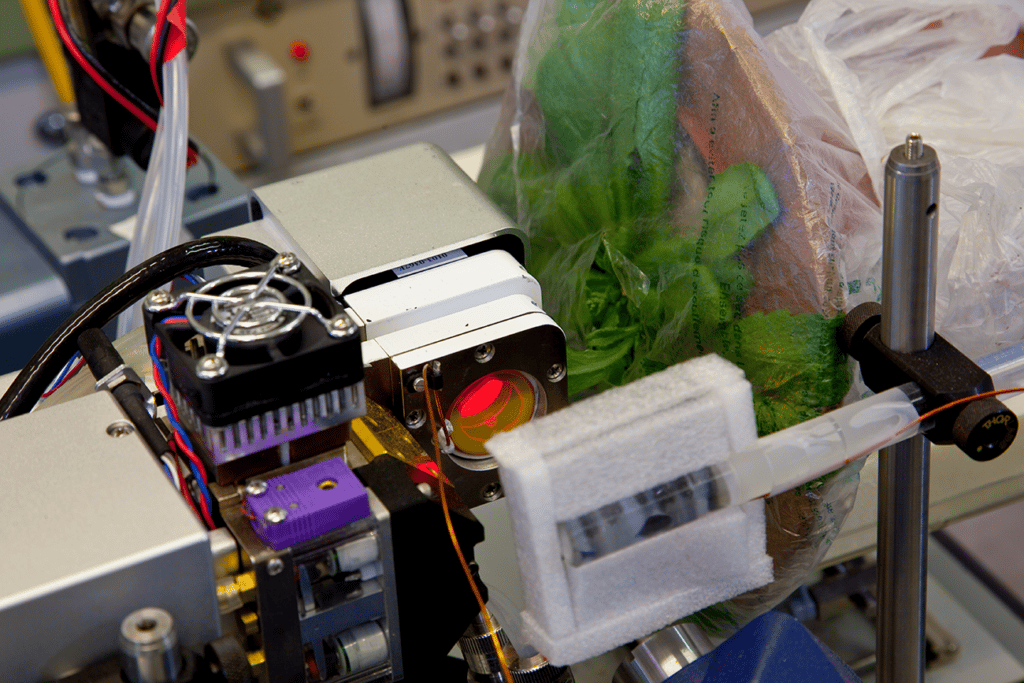You are here : Home City of energies > HOME BIAM > Search > P&E > P&E Research Themes
Research Themes
Understanding how Photosynthesis Acclimates to the Environment
Motivated by the advancement of scientific knowledge, our research topics can meet potential needs in agronomy, ecology, plant breeding, bioenergy or green biotechnologies. Indeed, scientific expertise in integrated photosynthesis is needed to invent solutions for adaptation or mitigation to climate change, to understand the acclimation of plants and ecosystems to increased CO2 and temperature, and to better quantify the contributions of plants and microalgae to biogeochemical cycles.
ANR RevelOrg 2021-2025
This theme addresses the light acclimation process in photosynthetic organisms using molecular genetics and comparative phenotyping. The APE1 protein factor, as well as other light acclimation factors will be studied simultaneously in four model organisms (Arabidopsis, Chlamydomonas, Synechocystis and Synechococcus). To do so, we are working in collaboration between researchers with different skills in photosynthesis: work on Arabidopsis, biochemistry and microscopy will be led by Professor Stefano Caffari (BIAM/LGBP, BIAM). Corinne Cassier-Chauvat (CNRS, iB2C, Saclay) will lead the work on cyanobacteria and photosynthetic metabolism. This work will be enriched by a broader and more global “-omics” study of the stress response related to light acclimation. The coordinator, Xenie Johnson at BiAM will use biophysical measurements to characterize the physiological importance of these factors in the regulation of photosynthesis. At the heart of the project, the structure-function analysis of APE1 and the study of its molecular interactions will allow us to characterize a molecular mechanism that integrates different factors of light acclimation.
ANR PhotoRegul 2018-2022
State transitions, that allow changes to light absorption between the two photosystems without energy dissipation, are an important form of photoprotection. This works via phosphorylation of LHCII antenna by a kinase, Stt7. The mechanism of activation of Stt7 kinase by cytochrome b6f was poorly understood because knowledge indicated that the kinase domain of Stt7 was located on the stromal side of the membrane (Qi site) while the activation signal was thought to originate from the luminal side of the membrane (Qo site). Our recent advances in understanding this mechanism have allowed us to reveal that the triggering of Stt7 kinase to phosphorylate LHCII proteins occurs via a direct interaction with the cytochrome b6f complex in the stromal compartment (Dumas, 2017 & 2018). This discovery expands our horizons as we have now identified key residues of cyt b6f involved in the interaction with Stt7.
This project is currently continuing using the Phos-tag SDS PAGE technique to measure the phosphorylation status of the Stt7 protein kinase in various reference strains or strains affected by targeted mutations.
Article: La photosynthèse, une réaction largement méconnue
Vitale pour l’équilibre de notre écosystème, la photosynthèse n’a pas livré tous ses secrets… Mieux la comprendre aiderait à nous adapter au changement climatique, et même à diminuer son impact.
https://lejournal.cnrs.fr/nos-blogs/focus-sciences/la-photosynthese-une-reaction-largement-meconnue

Regulation of stomatal pore opening is a key process that governs a “constitutive” trade-off that plants must face in nature: limiting water loss from day and night transpiration while allowing CO2 diffusion into the leaf for photosynthetic uptake. Despite the importance of night-time stomatal closure in maintaining plant health and limiting water losses in the ecosystem, it remains unclear whether this stomatal response to darkness is simply a passive consequence of the absence of light stimulus, or an active process recruiting other stomatal closure mechanisms or involving independent signalling events.
Using an IR imaging-based screen, we had isolated the ost2 mutant, (ost for open stomata) and a class of novel Arabidopsis mutants that keep stomata open all night long that we named opal for “open all night long” (Costa et al 2015). Based on their phenotypic responses to ABA and CO2, we proposed that these mutants are affected on specific regulations of stomatal closure in the dark. In other words, it is not only the lack of light that regulates stomatal closure in the dark. Genetic and molecular characterization of these mutants was undertaken. The characterization of opal2 led us to the identification of a molecular candidate involved in the chloroplastic carbon metabolism of the guard cell (work in progress). Furthermore, a collaboration with A. Hetherington (Bristol Univ., UK) on opal5 allowed us to confirm the key role of guard cell actin in the stomatal light/darkness response (Isner et al. 2017).
Furthermore, recent work undertaken on stomatal and transpiratory responses to light/darkness, ABA, CO2, and atmospheric water vapour deficit in different stomatal mutants and in different plant species, lead us to propose that water supply to different mesophyll tissues is regulated by the magnitude of the transpiration flux per se. In this context, we have worked on the development of new non-invasive tools based on THz spectroscopy that allow us to experimentally address the dynamics and distribution of hydration in mesophyll tissues.

How can we optimize photosynthesis to improve agricultural yields?
The CAPITALISE project aims to provide results leading to a sustainable environmental action plan in 2030. It aims to improve photosynthetic efficiency by 10% in different types of environments. Within the framework of CEA programs, we propose to identify original traits related to chlorophyll levels from mutant lines of tomato, barley and maize. These factors will allow to increase the efficiency of light use by optimizing chlorophyll levels based on the exploitation of natural variation. This work will be carried out in collaboration with Roberta Croce professor at Vrije Universitat d’Amsterdam in the Netherlands.
H2020 CAPITALISE Project: Combining Approaches For Photosynthetic Improvement To Allow Increased Sustainability In European agriculture
For more information: https://www.capitalise.eu/
https://www.horizon2020.gouv.fr/cid73300/comprendre-horizon-2020.html
ANR HemeMotion 2022-2026
Advancing knowledge on bioenergetics is the key to identifying opportunities for improving the performance of the catalytic enzymes involved in photosynthesis. Here we propose to elucidate the role of a cofactor present in the chloroplast cytochrome b6f complex which is missing in the mitochondrial cytochrome bc1 complex. Because oxygen is produced by photosynthesis in the chloroplast and consumed by respiration in the mitochondrion, the oxygen tension is much higher in the former than it is in the latter. We believe heme ci is required in the chloroplast to avoid the formation of reactive oxygen species. Based on our preliminary unpublished work (new site-directed mutants, new time-resolved spectrophotometers, new measuring chambers) we think we can show the molecular mechanism of concerted reduction and protonation of the quinone avoiding the harmful semi-quinone state. This would put into perspective the ambitions we have made to make photosynthesis more robust and more efficient.
ANR CyanoFlow 2024-2028
Cyanobacteria were the first organisms to have evolved oxygenic photosynthesis and are the ancestrors of all chloroplasts. Cyanobacteria are attractive organisms for green biotechnology strategies aimed at redirecting photosynthesis towards the production of high value compounds. They are also very interesting bioenergetics systems, because they are the only organisms in which aerobic respiration and oxygenic photosynthesis occur in the same cellular compartment. How these two major biological processes co-exist and interact remains largely unexplored. We study the interconnections, synergies and regulation of photosynthesis and respiration in model cyanobacteria species using a combination of molecular genetics, biochemistry, in vivo imaging and non-invasive biophysical methods. We want to study how the electrons fluxes are regulated at the molecular level.
By correlating the quantification of the electron fluxes with the molecular architecture of the transport chain, we aim at better understanding the mechanisms of co-regulation of photosynthesis and respiration and how they affect the light energy conversion efficiency in cyanobacteria.
This project has received funding from the France 2030 program FairCarboN under grant agreement ANR-23-PEXF-0003
In the context of a global climate emergency and the need to achieve carbon neutrality, terrestrial ecosystems are facing major challenges. Of particular concern is the negative impact of climate change on the sequestration of carbon dioxide (CO2) by photosynthesis. In this situation, critical questions arise about agricultural solutions designed to mitigate these impacts and enhance plant adaptation, while sustaining high crop production levels. GREENSCALE presents an innovative approach to reduce nitrogen input while maintaining carbon as a strategy for mitigation. The core hypothesis is based on the regulation of chlorophyll content [Chl] in plants, a natural process that influences photosynthetic acclimation to environmental conditions. The project aims to test the concept that a specific adjustment of chlorophyll b and its associated protein complexes can reduce soil nitrogen uptake, lower canopy temperature and evapotranspiration, without compromising CO2 uptake under non-limiting light conditions.
This initiative is the result of an innovative partnership between researchers from INRAE, CNRS, CEA and ARVALIS. Its ambition is to understand the complex interactions between nitrogen nutrition and photosynthesis, the carbon-nitrogen cycle in the soil, and to develop models from the field to the environmental scale. Using non-GMO barley varieties of different shades of green, GREENSCALE explores the biological responses of these crops to drought and nitrogen. The results obtained on induced chlorophyll variability will improve the accuracy of land surface models, particularly when considering the natural variability observed in croplands and grasslands.
The project’s outcomes will guide future plant breeding programmes to meet the needs for cereal production and pave the way for more sustainable and resilient farming practices in response to environmental challenges. Beyond its impact on agriculture, GREENSCALE contributes to a broader effort to structure integrated photosynthesis research in France. The project aims to foster collaboration between different scientific fields and to integrate complementary approaches across disciplinary boundaries. This is achieved by bridging the gap between molecular and cellular research, and environmental and agronomic approaches. GREENSCALE is an innovative initiative that combines cutting-edge research, inter-institutional collaboration, and a commitment to sustainable and resilient agricultural solutions to address global environmental challenges.
Link to FairCarboN: https://www.pepr-faircarbon.fr/projets/projets-laureats-de-l-appel-a-projets-faircarbon/greenscale
Link to LinkedIn newsfeed: https://www.linkedin.com/in/green-scale-983699313/

Team manager
Jean ALRIC
Deputy manager: Xenie JHONSON
Contact the team
Key words
Genetics; metabolism; Chlamydomonas; Arabidopsis; Barley; Tomato; Maize; abiotic stress; CO2; structure-function; biophysics; photo; chloroplast; mito-respiration; electron transport; stomates; translational approaches; photoprotection; Chlamydomonas; eco-physiology; Synthetic biology; climate change
Lorem ipsum dolor sit amet, consectetur adipiscing elit. Ut elit tellus, luctus nec ullamcorper mattis, pulvinar dapibus leo.